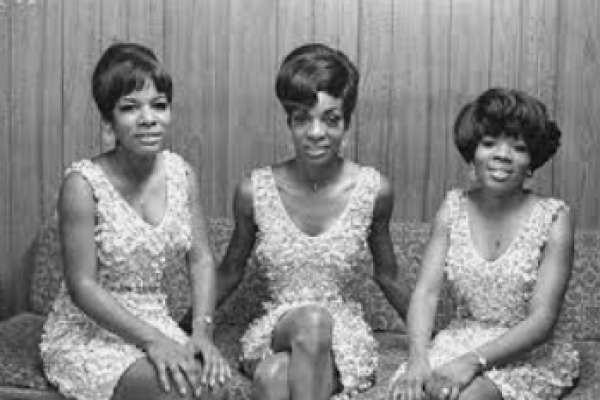In my mind, of all of the female artists at Motown, Martha Reeves comes in at a solid number two.
But nobody likes being number two. So this story is about Martha’s road and no one else’s.
Beginnings at Motown
Martha wanted to sing, and she wanted to sing at Motown. But it seemed that any Black “kid” with one iota of talent wanted the same thing. So, following the success of male artists such as “Little” Stevie Wonder, Smokey Robinson and the Miracles, and Marvin Gaye, Motown began looking at their female lineup.
They already had Mary Wells (“My Guy”) and The Marvelettes (“Please Mister Postman”), and they had the perfect songwriting team (Holland-Dozier-Holland, or H-D-H) to make it happen.
By this time, Reeves had already made some inroads at Motown. She had a background in jazz, gospel, and even opera. But she could be a bit “grittier” and had a more soulful voice than Ross, having worked the Detroit nightclub circuit from 1957. Ross was coached to “lose the soul” in her music. Berry Gordy wanted a solid act that could cross the barrier of Black and White.
Martha and the Vandellas were “the tough, hip girls from down the street, as opposed to the Supremes’ kittenish, airbrushed glamor,” as told in an article by Daniel Washington in The Michigan Chronicle.
Discovered by a Motown executive at a Detroit nightclub, Reeves was asked to audition. However, she mistakenly showed up on a wrong day and was hired anyway, assigned to work the phones. So instead, she got into Motown with her secretarial skills.
Reeves and Diana Ross began circulating the halls at Motown in the early 1960s. While Ross had arrived first, her groups (The Primes and The Primettes) did not make any waves on the charts. When joined up with Mary Wilson and Florence Ballard, both strong vocalists in their own right, things began to click.
Still, it took them nearly five years to have their first hit record, and they were known around Hitsville as the “no-hit Supremes.” So they did office work and sang background vocals when the opportunity arose.
The Supremes had to be a little jealous when H-D-H wrote three songs that made Martha and the Vandellas the stars they became. In 1963 alone, they had hit the charts with “Come and Get These Memories,” “(Love is Like a) Heatwave,” and “Quicksand.”
In 1964, H-D-H helped The Supremes finally have that elusive hit record with “Where Did Our Love Go,” landing at #1 on the Billboard charts for two weeks. That same summer, they penned the biggest hit that Martha and the Vandellas would have with “Dancing in the Street.” But it only managed to make it to number two. After that, they had a few songs that reached the top ten, but never a number one single.
It was known around Motown that founder Berry Gordy had a thing for Ross, and they had a child out of wedlock. So on that account, Reeves couldn’t compete. Second fiddle again.
Shenanigans at Motown
“Just eight months after our first big hit, the Supremes were Motown’s greatest commodity. But as great as the Motown machine was, it could only work on a couple of acts at a time…Martha and the Vandellas, for example, saw their position erode.” ~Mary Wilson of The Supremes from Dreamgirl--My Life as a Supreme.
According to Daniel Washington’s Michigan Chronicle article:
“After one of the numerous skirmishes, Reeves once chased Diana Ross into a phone booth. She then called Berry Gordy to complain. Gordy told Reeves to “leave her alone,” regardless of Ross being the instigator. Years later, Reeves stated, “I was going to fight her.”
Reeves attempts to set the record straight in her biography, “Dancing in the Streets: Confessions of a Motown Diva,” where she spoke of alleged feuds with Ross and Gordy but tended to soft-pedal the issues.
According to an interview in the Daily Mail, Reeves vied with Ross for the mantle of Motown’s First Lady, but Martha denies a feud.
“There might have once been a confrontation over some costumes, but Diane and I were never rivals.”
In a 2008 interview with Vanity Fair, Martha said of Ross: “I love Ross. That’s what I call her — Ross. When I first got to Hitsville, (The Supremes) weren’t old enough to get in clubs, and sometimes we’d slip her in. I’d pick her up in my car. I sort of took her under my wing.”
“Honey Chile” was the last single Martha and the Vandellas would have on the Billboard Hot 100, peaking at number 11.
Reeves spent many years after that battling drug addiction and being incarcerated in a mental institution. After Reeves followed Motown and left Detroit for Los Angeles, she says that she was offered all sorts of drugs. “Your nose is really made for cocaine,” they’d say. One account said her dentist got her addicted to cocaine. LSD was dropped into her champagne.
In 1972, Reeves negotiated out of her contract with Motown. From that point, she and the Vandellas filed a lawsuit in 1989, claiming they had received no royalties from Motown since 1972. A settlement in The Vandellas favor was reached in 1991.
Martha and the Vandellas were inducted into the Rock and Roll Hall of Fame in 2003. Then, of all moves, after returning to Detroit, Reeves ran for and won a seat on the City Council for a four-year term.
Finally, Reeves received a star on the Hollywood Walk of Fame on her 80th birthday on July 18, 2021.
Currently, Reeves resides in Detroit. She appeared at her own show in Glasgow in September 2021. She performed with Mary Wilson of The Supremes in a show they termed “Legendary Ladies” for six years. Wilson’s untimely death in February 2022 brought that to an end. Reeves and Wilson had known each other since high school, and Reeves said, “Mary and I were never competitors. We were sisters.”
Reeves didn’t have all of Ross’s advantages, but here’s a woman who has never given up. So being number two might not be so bad after all.
By Arther Keith









No Comments